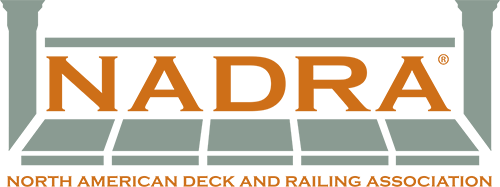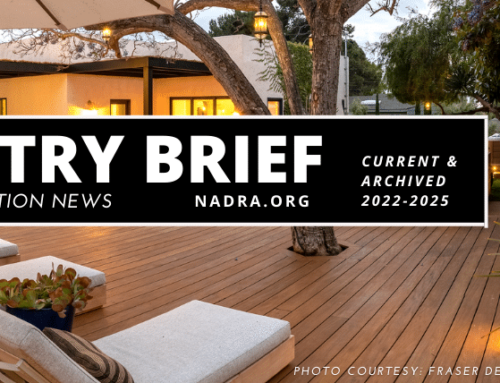It was great to meet and speak directly with NADRA members at the Atlanta meeting. We look forward to working with the organization, and encouraging communication within our industry. Koppers believes it is important to provide a unified source of information for deck building professionals to learn more about the use of treated wood products and technologies.
The main reason for the new Standard change is to address misuse of ABOVE GROUND treated wood products. ABOVE GROUND treated products shall not be used in ground contact, or subjected to hazards comparable to ground contact. If components such as a deck joist, or support beam are critical to the performance and safety of the system and would be difficult to maintain, repair or replace, then those components shall be treated to GROUND CONTACT Standard. ABOVE GROUND treated wood products, regardless of the preservative system, will perform only in “above ground” end use applications. Applying a little bit of common sense and good judgment will in most cases, lead to the logical and safest conclusion; that joists and beams in the majority of decks and fresh water docks should be treated to the GROUND CONTACT Standard.
- In February of this year, the American Wood Protection Association (AWPA) passed a U1 Standard change affecting above ground and ground contact treated wood products.
- This Standard change officially became effective in July 2016, when the AWPA Book of Standards was published.
- The new Standard change is affecting treated wood purchasing practices of home centers and lumberyards throughout the U.S. Many retailers are now ordering ground contact treated 2” lumber and decking to meet the new requirements.
- The new AWPA Standard change is not confusing or hard to apply.
- The AWPA Book of Standards states, “AWPA Standard U1 is the primary standard for specifiers, such as architects and engineers, but also for end users and building code officials. This Standard contains the information needed by specifiers in order to select a product that best suits their needs.”
- The AWPA Standard change establishes new guidelines for when wood shall be treated to the UC4A Ground Contact General Use category in situations that simulate ground contact, such as:
- When there is a reasonable expectation that soil, vegetation, leaf litter or other debris may build up and remain in contact with the component.
- When the construction itself, other structures or anticipated vegetation growth will not allow air flow to circulate underneath the construction and between decking boards.
- When components are installed less than six inches above ground (final grade after landscaping) and supported on permeable building materials (e.g. treated wood or concrete).
- When components are in direct contact with non-durable untreated wood, or any older construction with any evidence of decay.
- When components are wetted on a frequent or reoccurring basis (e.g. on a freshwater floating dock or by a watering system)
- When components are used in tropical climates.
- In addition, the new AWPA Standard states that above ground wood components, including joists and beams for decks and fresh water docks, shall be treated to Ground Contact UC4A when they would be:
- Difficult to maintain, repair, or replace; and
- Critical to the performance and safety of the entire system.
- Applying a little bit of common sense and good judgment will, in most cases, will lead to the logical — and safest — conclusion that joists and beams in the majority of decks and fresh water docks shall be treated to the Ground Contact Standard.
- The bottom line is that if a deck joist and/or a support beam are critical to the performance and safety of the system and would be difficult to maintain, repair or replace, then wood treated to the Ground Contact Standard shall be used.
- Above Ground treated wood products, regardless of the preservative system, will perform only in “above ground” end use applications.
- The main reason for the new Standard change is to address misuse of above ground treated wood used in ground contact or in applications that are physically above ground but are subject to hazards comparable to ground contact exposures or are used in applications involving components that are critical to safety and performance and will be difficult to maintain, repair or replace.
- The new Standard change will help address the misuse of above ground treated wood products.
To learn more, please visit: www.kopperspc.com
Todd Greer
Todd Greer is the Director of North American Sales and Service for Koppers Performance Chemicals. His experience in the treated lumber industry includes 21 years with Timber Products Inspection, both in the field and in management of several programs. Todd joined the Koppers team to focus on Customer Development and Quality Control.





